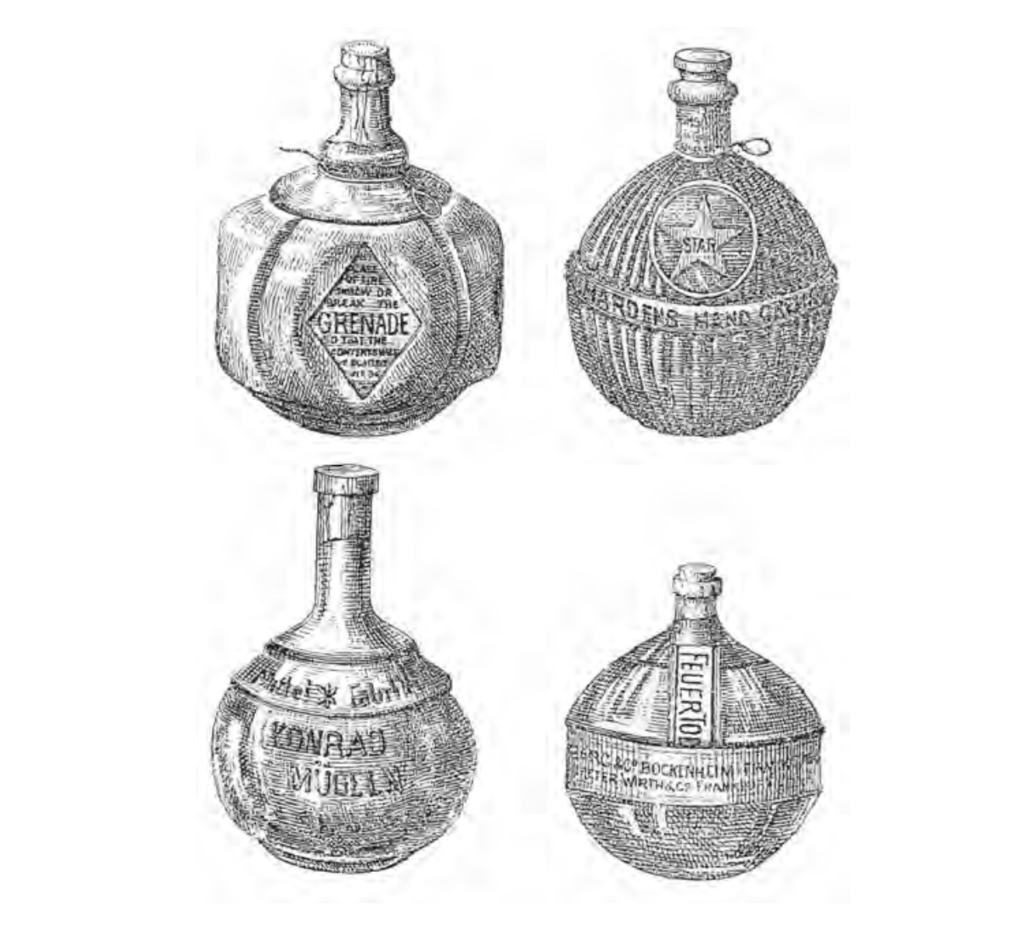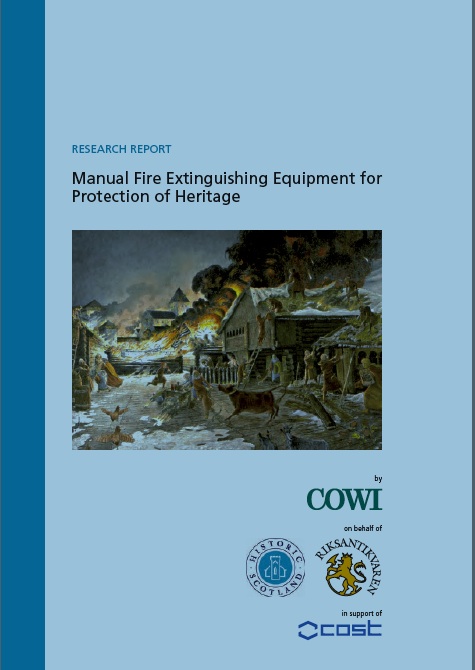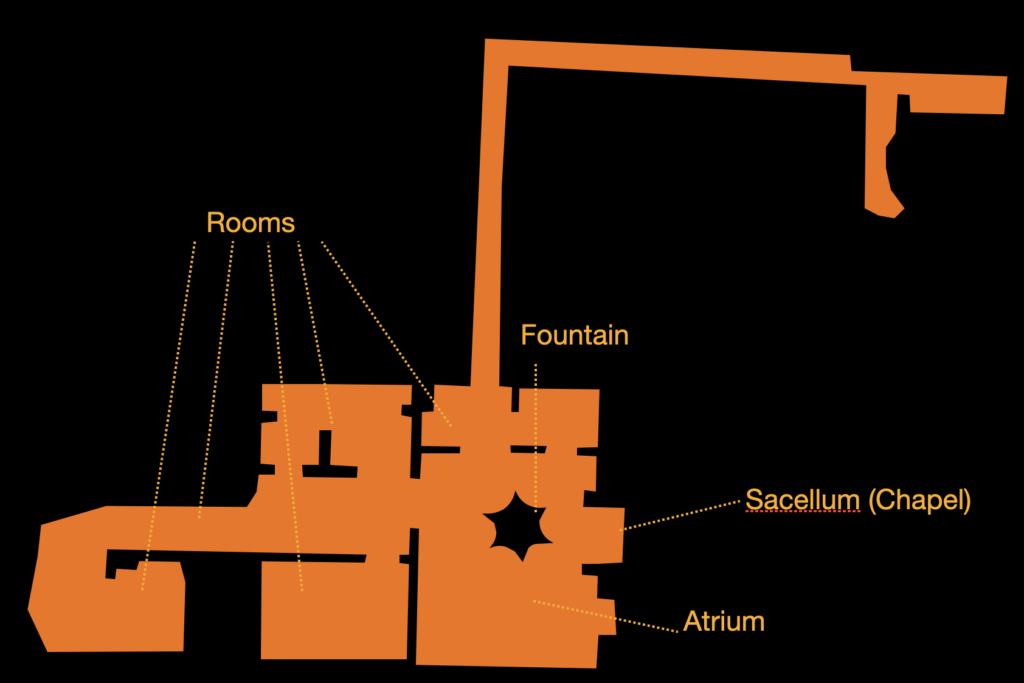Firefighting Equipment for Museum: a 2006 Report
The report Manual Fire Extinguishing Equipment for Protection of Heritage, compiled on behalf of the Riksantikvaren the Norwegian Directorate for Cultural Heritage (RNDCH) and Historic Scotland, provides an overview examination of available firefighting equipment and techniques for museum staff to use in the early stages of a fire.
The 2006 report “Manual Fire Extinguishing Equipment for Protection of Heritage“, prepared by COWI within the COST C 17 Action on behalf of Riksantikvaren, the Norwegian Directorate of Cultural Heritage (RNDCH) and Historic Scotland, is one of the few documents that addresses the problem of the choice of extinguishing agents suitable for use in historical or cultural heritage sites. It provides an overview examination of available firefighting equipment and techniques for museum staff to use in the early stages of a fire. In the report six categories of handheld extinguishers are evaluated, three techniques for fighting fires without extinguishers, and nine automatic small extinguishers for use in museums, galleries, or historical buildings. The evaluation criteria include ease of use, extinguishing efficiency, secondary damage, maintenance, and cost.

The report includes the results of a series of tests on such equipment, which were conducted by COWI AS in cooperation with the Norwegian Institute for Cultural Heritage Research (NIKU). Thirteen sample artifact materials were subjected to hot smoke and six different extinguishing media. Reference samples were compared to those subjected to smoke only and those subjected to both smoke and extinguishing methods.
Another important aspect of the report is the focus on handheld equipment. While it is not a clear recommendation, the report suggests that whenever water mains are available, water hose reels should be preferred over other types of handheld extinguishers. They are easy to use, and they do not run out of water. Additionally, hose reels can be beneficial in ensuring that staff are familiar with their use, and they are in working order.
The report also notes that misuse of extinguishing equipment in museums is expected to be more severe with powder or wet chemical handheld units compared to water damage, which is easier to deal with. In the UK, experience of misuse of hose reels has led to a preference for handheld units, while in Norway, the misuse of powder units has resulted in a recommendation for hose reels in preference to handheld units.
Moreover, the report suggests that owners of historical buildings and museums should assess the risk of misuse of extinguishing equipment at their locations and install hose reels as a first choice, with handheld units used for supplementary purposes and specialized provision.

The report also examines the impact of extinguishing agents on artifact materials and finds that agents containing chemicals (foam and emulsifying agents) extensively affect the surfaces of the material samples. Excessive water increases mechanical and wetting damage to samples, while powder agents result in considerable costs in the follow-on cleaning and conservation of the materials. The cooling effect of CO2 causes damage to certain materials.Despite the lack of supporting statistics, the report assumes that combustion rarely takes place in museum objects or in any vulnerable preserved materials themselves. Therefore, the use of portable extinguishers or their agents will not pose a significant risk of secondary damage.
The report concludes that if extinguishers are used after the fire has grown, the increase in damage per minute is so great that the damage caused by the fire itself will invariably be greater than that caused by the extinguishers, their agents, or hardware.
Therefore, it is more valuable to save material by resolute rather than careful extinguishing of the fire. Damage by fire accelerates with time, and during the early stages of a fire, there is typically a critical point where the damage caused by fire exceeds that of damage caused by extinguishing media.
During manual firefighting at a later stage, it is more important that tools and agents are effective in extinguishing, but during the early stages of a fire, it is important that the tools and material used cause minimum damage to the objects affected.
According the conclusion of the report, “Conventional wisdom suggests that museums and heritage buildings require special extinguishers to avoid damaging cultural artifacts, but this is not necessarily true“.
Fires in heritage buildings typically start in common items such as electrical appliances, electrical distribution boards, and wastebaskets, just like in any other building. Therefore, there is no immediate risk that extinguishing media will damage artifacts at the early stages of a fire where handheld units are supposed to be used. Typically, artifacts themselves are not impacted by the fire until the later stages when handheld units are less appropriate. It is important to carefully consider worst-credible scenarios before concluding otherwise






